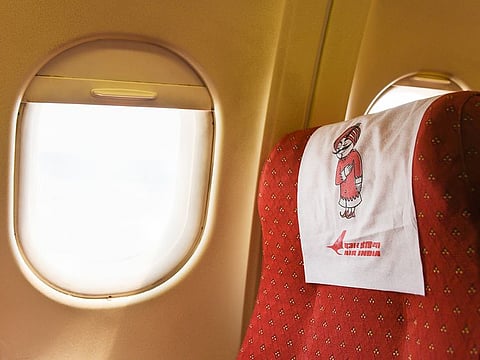India's skies will once again be busy in 2022 as new and existing airlines battle it out
How will Air India, a revived Jet Airways and brand new Akasa fare?

Dubai: 2022 will be a landmark one for India’s aviation industry after roughing it out for nearly two years because of COVID-19.
A new airline - Akasa – will take to the skies while there will also be a return for Jet Airways after being out of action for some time. Jet’s revival comes under a new ownership, based in the UAE.
Meanwhile, the country’s flagship Air India, soon to come under the control of Indian conglomerate Tata Sons, will aim to be a major player in the long-haul market. And hopefully, return to profitability at some point.
“The Indian aviation story is one of parallel narratives - while domestic demand is rising and packed airport terminals and high occupancy factors are becoming commonplace again,” said Satyendra Pandey, Managing Partner, AT-TV, an aviation advisory firm. “But the foundation of India’s airline industry continues to be fragile.
There are too many seats chasing demand - and the inherent structure of demand has changed.

Price wars
In a market where cashflows are supported by government-mandated minimum ticket prices and airlines have excess fleets, operating margins are thin. The entry of billionaire Rakesh Jhunjhunwala-backed Akasa and of Jet Airways, which is emerging out of a restructuring, will lead to “margin erosion for strong and weak airlines alike,” said Pandey.
“They all chase - or plan to chase - the same market, the same demand, with similar fleets and similar networks. A price war is certain”
And why wouldn’t they fight over this market? While just 2-3 per cent of its population using air travel, India is one of the largest aviation markets in the world. According to CAPA (Centre for Aviation), over the next two decades, international traffic to and from India is expected to almost quadruple from pre-pandemic levels.
“The new variant Omicron has come at a time when the airlines were planning to see restrictions on international flying lifted,” said Pandey. “This would have helped with capacity deployment, but now that has been further delayed. The new variant will also impact demand – although the jury is out on how strict the measures will be.”
Structural challenges
According to some sources, airlines will continue to suffer as a result of structural issues in India’s aviation sector.
The inherent challenges faced by Indian airlines which lead to increased cost of operations in India largely remain.

The high costs are a result of “extortionate” taxes on aviation turbine fuel (ATF), aviation infrastructure, and the impact of a weakening rupee against the US dollar, which has a direct impact on fuel and aircraft leasing costs, said said Vinamra Longani, Head of Operations at Sarin & Co, a law firm specialising in aircraft leasing and finance.. “Add to this rampant capacity addition by competition and Indian airlines are forced to offer deep discounts resulting in some of the lowest airfares in the world.”
Year of recovery
But for India’s $32 billion hotel industry, 2022 could be the comeback year after the pandemic brought tourism to a halt. Global consulting firm HVS expects India’s hotels to reach pre-Covid occupancy and average daily rates by 2022 and 2023, respectively.
“India, however, continues to have the lowest proportion of branded hotel rooms compared with major Asian hotel markets,” noted VHS in a report.
As far as supply is concerned, Pune followed by Bengaluru and Hyderabad witnessed the fastest growth, with Bengaluru rising from being the fifth largest market in the country to second, said VHS.
Indian Hotels Company, which operates brands such as Taj and Ginger, reported a 132 per cent jump in its second-quarter revenue. “We remain confident in the continued momentum of growth with very encouraging market indicators,” said Giridhar Sanjeevi, Executive Vice-President and Chief Financial Officer, IHCL, in a recent statement.
“The sustained cost optimization measures have helped the company improve cashflows and liquidity.”
Sign up for the Daily Briefing
Get the latest news and updates straight to your inbox



